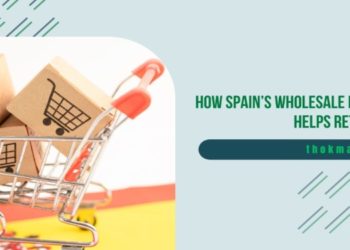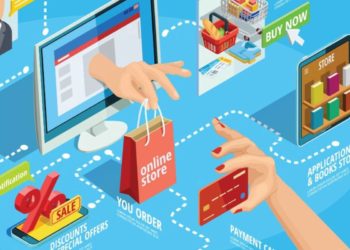Ecommerce has become extremely popular as more and more people shop online to find the things they want and need. Whether you’re looking for the latest trends in fashion or you need a part for your car, you can find it online. But what about the other side of that coin, and all the sites that sell goods and services?
If you’re planning on starting up an ecommerce store, or you already have one, and you need to bring in more customers, then understanding how to market it the right way is extremely important. Not everyone who’s good at selling something is good at marketing, and without proper advertising, your company might not get noticed in the sea of competition.
Marketing an ecommerce site also changes over time, too, since the internet isn’t a static space. What works one year might not work the next, and a catchy ad on one platform might fall flat on a different one. Running a successful ecommerce marketing campaign requires staying updated with trends and adapting strategies accordingly. Here’s what you need to know about marketing your ecommerce store, so you can give yourself the best chance of success.
First: Take Care of Your Branding Basics
Before you start to market your ecommerce store, you need to have all your branding basics in order. What does that mean? It means things like your logo, your company colors and style, your web design, and other aspects that make your store stand out. When customers see your logo, for example, you want them to immediately identify it as yours.
Building brand recognition is extremely important when there’s a lot of competition. Even for the more niche markets and interests, the internet makes it easy for people to start up stores and sites. You’ll still have competitors, and you want to be able to distinguish yourself from them. It’s also important to establish this aspect before you start marketing your store, because it involves creating materials and you don’t want to have to change everything later on.
Get Your Message Ready Before You Start
Anything related to your store’s design and overall message should be addressed, created, and fully developed before you start to market. Rebranding can be very difficult for a small business, and you don’t want to make your job any harder than it already is. Avoid having to change things later by getting them set up the right way from the very beginning.
By getting well-established in the minds of your customers from the start, you’ll be setting yourself up for a higher chance of success. Customers get used to seeing a particular style associated with your business. If you change it later those same customers might not realize that it’s you. That could lead to a lot of lost revenue.
Make Sure Your Logo Looks Trustworthy and Professional
Your logo is among the most important parts of your ecommerce store branding. It should be a design that customers feel good about. The right style and colors can help with that because customers will see your brand as something they can trust to give them good value for the cost.
You want a professional logo too, since you need your business to be taken seriously. Even fun businesses, like a site selling party supplies, still need a professional presence. People aren’t as likely to shop with you if they think your store isn’t operating as a serious business that will deliver on its promises and treat its customers right.
The great news about designing a logo for your new ecommerce store is that you don’t have to invest a lot of resources to get it done. If you use a logo maker you can get that part out of the way quickly and efficiently, for a very fair cost. Then, you can move on to the marketing part, with plenty of peace of mind.
The Best Marketing Strategies and Channels for Your Store
With all your branding in place, you’ll be ready to start your actual marketing and advertising. But where should you start, and which channels should you consider? What are the best strategies for your ecommerce business, and what can you safely ignore? Having the answers to these kinds of questions can make your marketing goals easier to reach.
Some of the decisions you make will depend on the kinds of products or services you’re going to be selling. For example, some products may be marketed to a younger crowd on TikTok, while other products would be better off targeting a different audience on Facebook or even LinkedIn. But overall, here are some of the best channels and strategies to consider.
1. Integrate and Influence With Instagram
Instagram is a great site for visuals like pictures and short videos. If you want to showcase a product, this is a great site to do that. There’s no reason not to use it when you can post frequently and let customers see what you have to offer.
Just make sure not to spam the news feed of customers who follow your page. Several posts spread out through the day should be fine, but don’t post them all at once, or post dozens in a short period of time.
Even if you offer a service, you can post before and after pictures, pictures of the products you use for the service, and other information your customers might want to know.
Before marketing your ecommerce store on Instagram, consider these tips:
-
- Influencers can help build your brand
- Remember to add links and hashtags to your posts
- Show off your products in their best light
- Be responsive to customer questions or concerns
When you focus on making your Instagram page a great way to show off your company’s products customers can see what you can do for them. Be sure to let them see the humans behind the products, though, whether that’s through pictures, videos, or even simply the responsive nature of the interactions they can have with your brand.
2. Invest in the Power of SEO
SEO, or search engine optimization, is still one of the most important strategies for ecommerce companies. You want to get your store’s website into the top 10 search results on Google and other search engines.
You also want to get your product pages to show up in results, too. That can bring you a lot of organic traffic and reduce your advertising budget, since you can focus on getting people to find your store more naturally.
With good keyword research you can find out what your customers are searching for. You want to reach people who are looking for your products, and the way to do that is through using terms and phrases they would search for.
To optimize your store for SEO you also want to:
-
- Provide great content that other sites will link to
- Optimize your store to give users a good experience
Both of those tasks can take some time and effort, but they’re also very important when it comes to getting noticed in search. Poor SEO isn’t going to help your business, and if you stuff a bunch of keywords in bad content you might not show up in the search engine rankings at all. You can protect your business more easily with proper SEO.
3. Leverage User-Generated Content
A great way to market your ecommerce store is to let your customers do it for you. How? Through the power of user-generated content. That means taking the reviews your customers provide and post things on their own pages, along with the pictures and videos they post of your product, and using them in your marketing efforts.
You want to make sure you have your customers’ permission to do this. You can ask them directly, but if you don’t want to do that you can also provide a disclaimer that reviews and testimonials provided on your social media pages or uploaded to your store’s site may be used. You can also use a customer testimonial tool that helps you automate that process a bit and manage the different aspects of it.
No matter how you choose to handle it, if you plan to leverage the power of user-generated content for your ecommerce store marketing, make sure you:
-
- Get permission from the customer
- Be honest about what they said
- Thank them for the review
- Consider offering small incentives for content
By encouraging customers to take pictures and videos of your product and post them, your store can get some quick social media recognition. That could lead to a lot more customers, possibly really quickly. It’s also good to show potential customers that your store is interactive and engaged with them, and that you care about meeting their needs. Most customers respond well to that.
4. Optimize for Mobile Users
More people are using their mobile devices to shop for goods and services than ever before. If your store isn’t optimized for mobile it’s likely that potential customers will just choose a competitor, instead.
Naturally, that’s something you want to avoid. Making sure your site works well on mobile should be one of the first things you do when you get your store up and running, so you don’t lose customers.
To optimize for mobile, consider these tips:
-
- Format your images correctly
- Have larger buttons to add to cart and purchase
- Provide a responsive design
- Test the store on several devices
While some mobile users will switch to a computer to buy from you if your store doesn’t load well, many of them won’t bother. Don’t take the chance of chasing them away at the beginning of their buying journey.
The Bottom Line for Ecommerce Marketing
The value of ecommerce marketing is extremely important for your store’s future success. Taking the time to set up your branding, get a great logo, and prepare everything before you start marketing. Then make sure you market effectively. While the success of any online store isn’t guaranteed, making wise choices from the start can significantly increase your chances.
David Prior
David Prior is the editor of Today News, responsible for the overall editorial strategy. He is an NCTJ-qualified journalist with over 20 years’ experience, and is also editor of the award-winning hyperlocal news title Altrincham Today. His LinkedIn profile is here.













































































